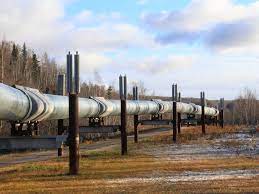Somewhere in the rural quiet of Fort Ransom, North Dakota, the Keystone pipeline made a bit of a splash this morning—literally. A mechanical bang startled an on-site worker enough to shut down the flow of oil within about two minutes. The pipeline remains shut.
The crude spill, now confined to a field, hasn’t yet been quantified, but emergency crews are on the scene.
The cause and volume are not yet known.
Just a few weeks ago, President Trump called—yet again—for the revival of the Keystone XL pipeline, the much-lobbied zombie project that refuses to go quietly into the night. “Easy approvals, almost immediate start!” he promised via Truth Social. The original XL was intended to move 800,000 barrels per day of Canadian heavy crude to U.S. refineries before the Biden administration deep-sixed it, citing little need for a pipeline that moves hydrocarbons given the country’s green aspirations.
But TC Energy, the previous developer of the project, has already torn up the laid pipe and moved on in response.
This latest rupture won’t exactly grease the wheels for Keystone’s second coming, which a 2022 poll showed most Americans support, particularly after the United States banned Russian energy after its incursion into Ukraine. According to a 2022 poll by Maru Public Opinion for Postmedia, 71% of Americans “favor very much” or “favor somewhat” then-President Biden using an executive order to restart the XL project.
The existing Keystone pipeline, operated by TC Energy, is about 2,687 miles long and has the capacity to move between 600,000 bpd and 700,000 bpd of crude oil from Alberta, Canada, to the United States. The XL expansion project would have more than doubled that capacity.

 Iran Energy News Oil, Gas, Petrochemical and Energy Field Specialized Channel
Iran Energy News Oil, Gas, Petrochemical and Energy Field Specialized Channel



